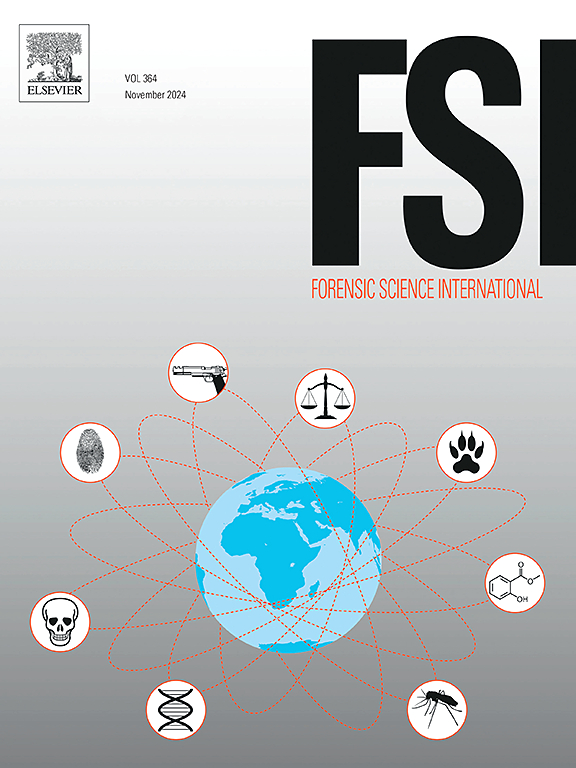用于非法药物检测的纳米技术进展:使用PRISMA框架的系统文献综述
IF 2.5
3区 医学
Q1 MEDICINE, LEGAL
引用次数: 0
摘要
纳米技术通过提高分析方法的灵敏度、特异性和便携性,彻底改变了法医学中的非法药物检测。本次系统审查在PRISMA 2020框架的指导下,评估了用于检测物质(如可卡因、海洛因和芬太尼)的纳米技术的最新进展。我们分析了2015年至2025年间进行的110项研究,重点关注了贵金属纳米粒子的表面增强拉曼光谱(SERS)和石墨烯和碳纳米管的电化学传感器等创新。这些技术能够在复杂矩阵中进行痕量水平的检测,其限制低至,从而支持快速的现场法医分析。智能纳米材料,包括分子印迹聚合物,已经进一步提高了选择性。然而,在标准化、稳定性和可伸缩性方面仍然存在挑战。这篇综述强调了由中国和美国主导的全球研究激增,并指出了将纳米工具整合到常规法医工作流程中的差距。未来的进展应优先考虑标准化协议、环境影响评估和便携式设备开发,以加强法医调查。这项研究强调了纳米技术在打击与毒品有关的犯罪方面的变革潜力,并为现代法医科学提供了精确和有效的解决方案。本文章由计算机程序翻译,如有差异,请以英文原文为准。
Advances in nanotechnology for illicit drug detection: A systematic literature review using the PRISMA framework
Nanotechnology has revolutionized illicit drug detection in forensic science by enhancing the sensitivity, specificity, and portability of analytical methods. This systematic review, guided by the PRISMA 2020 framework, evaluated recent advancements in nanotechnology for the detection of substances (e.g., cocaine, heroin, and fentanyl). We analyzed 110 studies conducted from 2015 to 2025, focusing on innovations, such as Surface-Enhanced Raman Spectroscopy (SERS) with noble metal nanoparticles and electrochemical sensors using graphene and carbon nanotubes. These technologies enable trace-level detection in complex matrices with limits as low as, thereby supporting rapid, on-site forensic analysis. Smart nanomaterials, including molecularly imprinted polymers, have further improved selectivity. However, challenges remain in terms of standardization, stability, and scalability. This review highlights a global research surge led by China and the US, and identifies gaps in integrating nano-enabled tools into routine forensic workflows. Future advancements should prioritize standardized protocols, environmental impact assessments, and portable device development to enhance forensic investigations. This study underscores the transformative potential of nanotechnology in combating drug-related crimes and offers precise and efficient solutions for modern forensic science.
求助全文
通过发布文献求助,成功后即可免费获取论文全文。
去求助
来源期刊

Forensic science international
医学-医学:法
CiteScore
5.00
自引率
9.10%
发文量
285
审稿时长
49 days
期刊介绍:
Forensic Science International is the flagship journal in the prestigious Forensic Science International family, publishing the most innovative, cutting-edge, and influential contributions across the forensic sciences. Fields include: forensic pathology and histochemistry, chemistry, biochemistry and toxicology, biology, serology, odontology, psychiatry, anthropology, digital forensics, the physical sciences, firearms, and document examination, as well as investigations of value to public health in its broadest sense, and the important marginal area where science and medicine interact with the law.
The journal publishes:
Case Reports
Commentaries
Letters to the Editor
Original Research Papers (Regular Papers)
Rapid Communications
Review Articles
Technical Notes.
 求助内容:
求助内容: 应助结果提醒方式:
应助结果提醒方式:


